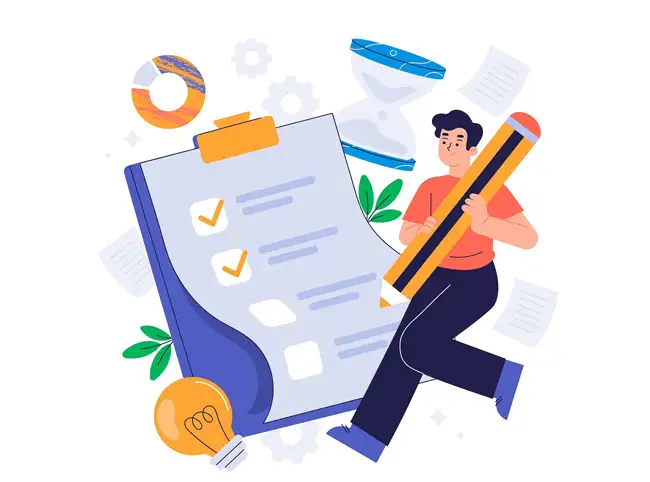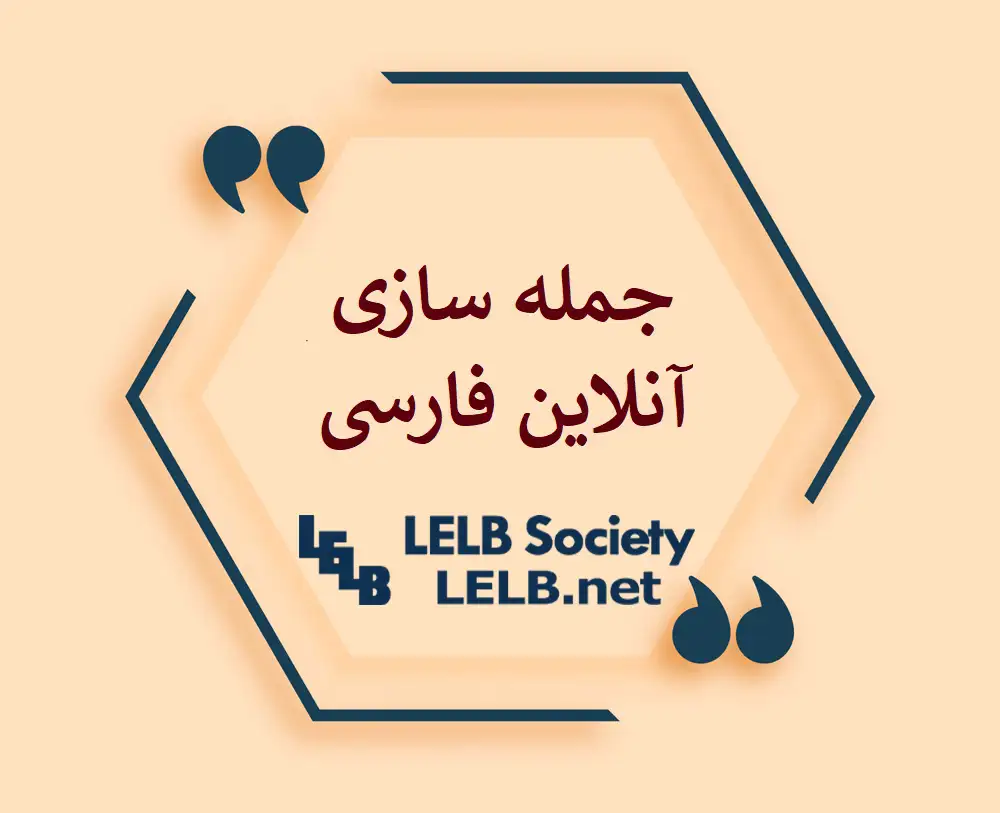Explicit corrective feedback in writing for ESL students written and narrated by Dr. Mohammad Hossein Hariri Asl
Author: Dr. Mohammad Hossein Hariri Asl
Video of explicit corrective feedback
Abstract
Writing academically is one of the most demanding and time-consuming activities in the face of ESL learners. That’s why language learners make a lot of mistakes in this activity. However, these mistakes could be considered a great and priceless source of feedback and revelation for the teacher and the learners if they are recognized, analyzed and responded correctly. To conduct the study, the researcher, as a participatory observer, conducted a qualitative study in 3 various milieus intensively during 2 months and a half. The cyclical data collection was triangulated through close observations, unstructured interviews, and open-ended questionnaires, together with a round table activity and anonymous log to elicit information. The study showed that explicit corrective feedback in line with negotiation of meaning and focus on form can yield satisfactory results in raising the L2 learners’ level of consciousness, making them more active and responsive to the class activities, operationalizing genuine and bona fide communication and interaction, and finally, acquiring a great level of accuracy in writing academically.
What is feedback?

Long (1981, as cited in Cook, 2008) suggested that it is not what the learner hears but how they are interacted with that matters. In its full form, this became known as the Interaction Hypothesis. It is believed that second language acquisition depends on profiting from conversation which makes concessions to the learner through processes of topic clarification and repair. According to Ferris, Pezone, Tade and Tinti (1997), “teacher response to student writing is a vital, though neglected, aspect of L2 composition research” (p. 155).
Most experienced writing instructors know that responding to student writing can be the most frustrating, difficult and time-consuming part of the job. “Providing written feedback on student papers is, however, arguably the teacher’s most crucial task: It allows for a level of individualized attention, and one-on-one communication that is rarely possible in the day-to-day operations of a class, and it plays an important role in motivating and encouraging the students” (Ferris et al., 1997, p. 155).
In terms of feedback from students, Freeman and Johnson (2005, as cited in Johnson, 2009) state:
Feedback from students, it’s coming at me all the time, like a stream of information; their body language, their accents, their fluency, all the content, all the stuff around the content but also all the information that is telling me about their affect, their affective relationship to what we’re doing. It’s just always coming at me and that’s what I work with to be able to make decisions as I go along (p. 86).
Responsive feedback
Wilson (1998, as cited in Davidson & Fulcher, 2007) defines responsive feedback as:
Responsive feedback … is part of a communication process which involves observation or other sensory input, interpretation, and response. It may in addition involve ongoing dialogue. Inaccuracy, in the sense of interpretations or misunderstandings may occur at any of these stages, as may obfuscations, denials, irrelevances, or contradictions (p. 35).
Interactional feedback

A number of experimental studies have supported the positive influence of interactional feedback on L2 development. Researchers have suggested that interactional feedback is associated with L2 learning because it prompts learners to notice L2 forms (Mackey, 2006). An interactional process that can result from feedback is known as modified output, and has been claimed by Swain (1995, 1998, 2005, as cited in Mackey, 2006) to be helpful in language learning.
A few studies have suggested that certain types of interactional feedback are more effective than others at promoting modified output by learners (e.g. Pica, 1989; Lyster & Ranta, 1997; Lyster, 1998a, 1998b, as cited in Mackey, 2006), although it should be noted that most of these studies have explored only the immediate effects of interactional feedback, and have not focused on longer-term learning.
Focus on Form
According to Ellis (2003), there are two principal ways of attempting to include a specific focus on form into task-based teaching:
- By means of tasks that have been designed to focus attention on specific properties of the code. Such tasks represent a proactive approach towards integration at the level of the syllabus.
- By incorporating a focus on form methodologically into the performance of linguistically unfocused tasks. This entails incidental attention to form and can be accomplished pre-emptively, i.e. the teacher or student can elect to address a form that arises in the communication, or reactively through feedback, which can be instant, i.e. can take place as an immediate response to a learner error, or delayed, i.e. take place after the communicative task has been completed (Ellis, 2003, p. 230).
Recasts
Long (1996, as cited in Ellis, 2008) argued that recasts constitute an implicit correction strategy that assist acquisition by providing opportunities for cognitive comparison (i.e. for learners to compare their own deviant productions with grammatically correct input).
In Long (2006, as cited in Ellis, 2008) he listed other advantages: they convey information about language in context; they involve joint attentional focus; the learner has prior comprehension of at least part of the message; the learner is likely to be motivated to attend and is thus primed to notice the correction; and the learner has freed up attentional resources which can be allocated to form-function mapping. According to Lyster (1998):
Findings reveal that recasts result in the lowest rate of uptake—including the lowest rate of repair. More importantly, neither recasts nor explicit correction leads to any peer- or self-repair because they already provide correct forms to learners. In contrast, elicitation, metalinguistic clues, clarification requests, and repetition of error not only lead to higher rates of uptake but all are able to elicit peer- and self-repair (p. 193).
Positive and negative evidence
Theoretically, there are two kinds of evidence available to learners as they make hypotheses about correct and incorrect language forms: positive evidence and negative evidence (Gass & Selinker, 2008). Positive evidence comes from the speech learners hear/read and thus is composed of a limited set of well-formed utterances of the language being learned.

When a particular sentence type is not heard, one does not know whether it is not heard because of its impossibility in the language or because of mere coincidence. It is in this sense that the sentences of a language that provide the input to the learner are known as positive evidence. It is on the basis of positive evidence that linguistic hypotheses can be made. Negative evidence, on the other hand, is composed of information to a learner that his or her utterance is deviant with regard to the norms of the language being learned.
Ellis (1993, as cited in Benati, 2004) studied the acquisition of complex Welsh morphology rules (rule system describing soft mutation) by native speakers of English. He used three groups exposed to three different instructional techniques: (1) explicit explanation of the grammar rule; (2) exposure to random selection of examples which contained the target grammar rule; (3) rule presentation followed by examples.
The EI given to the students in Ellis’s study was of a particular type: rules plus selected examples of the rules. The results obtained by Ellis showed that both groups where the explicit explanation was provided developed both their implicit and explicit knowledge. Carroll and Swain (1993) have also indicated that a combination of EI and metalinguistic feedback is beneficial in the case of complex rules.
Criticism
According to Mutch (2003), “feedback to students is a vital but relatively under-researched area” (p. 24).
The term negotiation of form is considered to be more accurate than negotiation of meaning in the ways in which teachers focused on form during meaningful interaction (Lyster, 1994, as cited in Lyster, 1998). In contrast to the latter’s primarily conversational function, “aimed to resolve communication breakdowns and to work toward mutual comprehension” (Pica, 1989, p. 65, as cited in Lyster, 1998), we attributed to the negotiation of form amore didactic function: namely, “the provision of corrective feedback that encourages self-repair involving accuracy and precision and not merely comprehensibility” (Lyster & Ranta, 1997, p. 42, as cited in Lyster, 1998).
We concluded that the negotiation of form provided learners with timely opportunities to make important form-function links in the target language without interrupting the flow of communication and while maintaining the mutuality inherent in negotiation. That is, when teachers used either metalinguistic clues, elicitation, repetition of error, or clarification requests, they returned the floor to students along with cues for the latter to draw on their own resources, thus allowing for negotiation to occur bilaterally. Conversely, there appeared to be little to negotiate between teacher and student when the teacher provided either recasts or explicit corrections.
Statement of purpose
According to Ferris, Pezone, Tade and Tinti (1997), “given the fundamentally unchallenged importance of teacher response to student writing, it is therefore surprising that there has been so little examination or systematic description of teacher commentary, particularly in L2 writing” (p. 156).
The present study was designed to address the issues of the same ilk. In actuality, it was attempted to take a critical approach to analyzing the participants’ written homework critically and closely in a mutual and respectful atmosphere with lots of give-and-take over a long period of time around two and a half months in length. The current study is intended to seek appropriate answers to the following research questions:
- What kind of attitudes and feelings do L2 learners develop when they are corrected explicitly in front of their peers?
- How can explicit corrective feedback help the L2 learners to improve their writing?
- Can responsive and explicit corrective feedback lead to self-correction on the part of the learners in their future writings?
- What is the influence of negotiation of meaning and focus on form on corrective feedback?
Methodology
To collect the data, the researcher used his language learners from three distinct milieus:
- First and third high school students in Dr. Khazaeli School, which is a special school for the blind,
- Online language learners from LELB Society, which is an international online language school with 215 active language learners,
- Language learners in the Communication Expansion Centre (CEC) language institute, which is a special language institute for the blind and visually impaired people for the first time in Iran, established, administered and taught by Dr. Mohammad Hossein Hariri Asl, the researcher: The researcher investigated the case on 20 participants for a lengthy period of time equaling two months and a half in 20 sessions. The participants’ level of proficiency was categorized according to the intermediate level.

It is important to note that in the section of distance learning, it was possible to share the teacher and the students’ desktops on Skype. It was a marvelous advantage that could naturalize the process of teaching and learning so that the students’ monitor could play the role of a live electronic board.
In all of the three above-mentioned milieus, particularly, the latter one, the participants were asked to write an essay on challenging topics such as: knowledge or wealth, childhood or adulthood, etc., as part of their weekly assignments. Then, during the week, their products were analyzed and their errors and/or mistakes were corrected by the researcher, and in the following session, the learners were notified of their grammatical mistakes.
The entire sessions were recorded so that the conductor of the study could have the chance to analyze the data as closely as possible.
Observation

In the entire study, the research played the role of an observer as participant, that is to say, according to Merriam (1998), participation in the group was definitely secondary to the role of information gatherer. To be more precise, according to Adler and Adler (1994, as cited in Merriam, 1998), the investigator used a peripheral membership role to observe and interact closely enough with members to establish an insider’s identity without participating in those activities constituting the core of group membership.
Interview

According to Patton (1990, as cited in Best & Kahn, 2006), “The purpose of interviewing is to find out what is in or on someone else’s mind” (p. 278). At the end of the study, the participants were interviewed. The interviews were held in an open-ended and semi-structured fashion because the questions had already been written out ahead of time.
At the time of interviewing, it was attempted to be respectful, nonjudgmental, and nonthreatening. The participants were encouraged to express their ideas freely in a friendly and informal ambience. The interviews were recorded and then transcribed by the researcher himself so that he could analyze them in more depth.

In addition, a special part of each session was devoted to a particular activity, under the title of round table. In this approximately 20-minute activity, the participants were sitting at a large and round table, discussing a particular topic on which they were supposed to write a 100-word composition. On many occasions, they were encouraged to talk about the process of error correction and the way their teacher provided them with feedback. This activity was considered to be a semi-structured interview. The recorded files were analyzed, and on some special occasions, transcribed to achieve more accuracy in analysis.
The entire and lengthy process of error correction in an explicit manner was audiotaped to be analyzed and transcribed later in great depth. In these interviews, the researcher and the participants got into a negotiation of meaning, based on focus on form to elicit the errors and mistakes in the compositions, correct them with lots of illustrations, explanations and examples, and make sure that they were deeply understood.
Documentation
The main collection of the documents to be analyzed were the compositions of the participants on pre-defined topics. They were expected to write 100-word compositions on agreed unanimous topics. In fact, this written activity was a major part of their weekly assignments.
To triangulate the process of data collection, the research devised and distributed some open-ended questionnaires among the participants, particularly at the final stages of the investigation. Then their responses were analyzed in great depths. One sample of the open-ended questionnaires is available in Appendix 1.
Another source of documented data was another technique that the conductor of the study refers to as anonymous log. To be more precise, from the outset of the investigation, the researcher used an empty notebook that he called the anonymous log. It was placed on the round table in the classroom. The participants were encouraged to write anything on this notebook without necessarily writing down their names. In so doing, they plucked up the courage to have an active share in the classroom because the researcher used to peruse them all and discuss them in the next session.
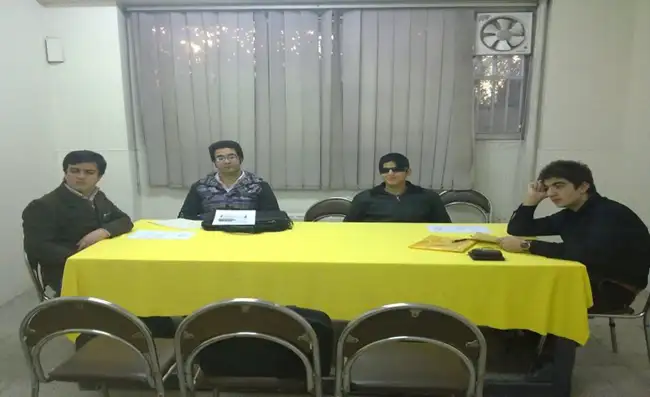
Furthermore, the online students were supposed to do the exercise of the books Essential Grammar in Use and Essentials of Practical Writing and send them via email to the instructor/investigator. These two books furnished the researcher with a valuable source of feedback in the form of writing activities.
It is important to notice that teacher commentaries in response to the participants weekly compositions turned out to be a great source of feedback for both the teacher and the learners. Having informed the learners of their grammatical mistakes with the help of teacher commentaries in the margin of their compositions, the teacher also furnished them with lots of oral examinations to clarify the points as well as possible.
Design
Since in all of the three academic milieus, the students were categorized according to the elementary and pe-intermediate levels, the process of error correction was pretty intensive and colossal.
The main focus of grammatical error correction was on tenses and articles because it was noticed that language learners, especially the beginning ones, have major problems in this particular part. As a result, the process of error correction was fairly focused and intensive. Of course, it should be stated that it was attempted to detect and correct all of their grammatical errors by underlining and highlighting them and writing comments in the margin of their essays.
While correcting their errors, a brief grammatical explanation was given to each of them. Since they were categorized according to the elementary level of proficiency, sometimes, it was necessary to correct their errors and give explanations in Persian. It was also attempted not to shatter their confidence by repeating this old saying that “nobody is perfect” and reminding them that it is totally natural to make mistakes in the process of second language learning.
The processes of error correction and explicit corrective feedback were audiotaped in which the students were allowed to ask any questions. It was attempted to raise the level of their consciousness, as part of form-focused instruction, because they were asked not to make the same errors in their following essays. Also a copy of the recorded session was given to anyone upon request so that they could listen to the recorded sessions at home when they are more at ease.
In this course, the participants were not asked to revise their products. Instead, they were encouraged not to make the same mistakes in their future products.
Limitations
According to Ferris (1999), “Teachers of L2 compositions who regularly provide grammar-oriented feedback would doubtlessly report that this is one of the most time-consuming and exhaustive aspects if their jobs” (p. 1).
Discussion
Throughout the investigation, it was noticed that the participants showed a great tendency to make a comparison between English and their first language, i.e. Persian because most of the time, when they were given some grammar explanation, they resorted to Persian for the sake of simplicity and clarification. Yet, from time to time, the researcher would remind them that they were supposed to think directly in the English language. The rationale for this request was that, most of the time, the interfering role of the first language outweighed its facilitating effect.
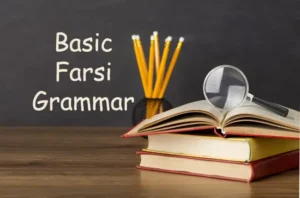
For instance, one of the learners at the CEC Language Institute, made this sentence: “I like to be teacher.” As it is clear, he has not used the indefinite article ‘a’ in his sentence, which is because of the impact of the Persian language. In this response, the teacher/researcher tried to settle the case through negotiation. It was attempted to clarify the problems so that the learners would not make the same mistakes in their next products. For instance, many participants had created sentences like the following:
I eat apple every day.
The correct application of the definite article “the” was another source of trouble for the majority of the participants. In this response, the following errors appeared:
I really like second chapter of the book.
In the Mr. Hariri’s class.
Furthermore, it was noticed that the learners, unfortunately, are accustomed to overusing their first language at the time of writing, which is rooted in the way English has been taught to them. This phenomenon per se leads to written products, which are based on translation. As it is clear, this type of writing is mechanical and not close enough to the target language.
However, whenever close similarities between the first and second languages were detected, for ease of understanding, they were allowed to forge links between the two languages.
Inductive learning
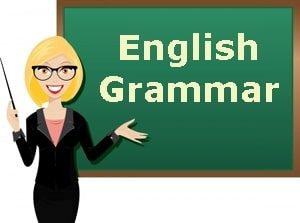
It also became clear that when grammar is taught to the learners inductively with a myriad of examples and illustrations to correct their mistakes or errors, they can gain complete mastery of the issue. In so doing, to help them to develop a deeper understanding of the grammar point, the conductor of the study used counterparts on any possible occasion. For instance, to teach present perfect tense, the researcher compared and contrasted the following sentences with each other:
- I have just had lunch.
- I have already had lunch.
- Jacob has been learning English for two years.
- Jacob has been learning English since he was 16 years old.
- Alice has played the piano since her childhood.
- Alice has been playing the piano since her childhood.
However, it was also noticed that it took a lot of time for the learners to internalize and master the differences completely. As a matter of fact, in their later compositions, they often made the same mistakes, although they could easily remember them. As a result, particularly in elementary levels, repetition of the correct grammar and structures was of pivotal importance. The use of counterparts in inductive grammar teaching was a perfect way to raise the level of consciousness in the language learners.
Overgeneralization
On many occasions, the learners would overgeneralize some grammar points exactly as children do when they learn their first language. Not only did the researcher criticize them for making overgeneralizations, but he would also congratulate them on using their creativity and initiative. After that, he would correct their mistakes and encourage the students not to make the mistakes of the same ilk. For instance, one of the CEC students created the word, teachering.
Another problematic grammar point was agreement. On many occasions, on account of the negative transfer of their first language, the participants made mistakes as the following:
There are four season in a year.
There are a lot of free time in the summer.
However, after receiving explicit error-correction in a mild fashion, they rarely made the same mistakes.
The other area at which the learners had major grammar problems was the proper use of parts of speech. The following mistakes were detected in this response:
I want to have a profit job. (instead of profitable)
I want to speak English good. (instead of well)
Mr. Hariri is a very well teacher. (good)
Furthermore, the correct use of prepositions was another problematic issue. That’s why some ungrammatical sentences like the following were created:
I use from English in my conversations.
I need to this book.
As it is clear, these mistakes have roots in the negative transfer of the Persian language, the participants’ first language.
Also it was noticed that the learners rarely consult a dictionary, although they were encouraged to do so. A good reason in support of this claim is that they made many blatant misspellings as: jab for job, lave for love, and becaz for because.
In the light of this research, it was clarified that the application of correct synonyms was never easy for the participants. On many occasions, they mistook improper synonyms for the correct ones, such as the following:
I want to talk English very well. (speak)
There were many girls and sons in the street. (boys)
Consciousness raising

From time to time, after giving explanations to the learners, the researcher uttered the following phrases:
- Is it clear now?
- Am I understood?
- Is there any question?
- Am I clear?
To increase the level of their consciousness, sometimes, the participants were asked to read aloud their own compositions in front of their peers. This activity was incidental and not predetermined. It was noticed that on many occasions, they themselves took the role of error-correction before being corrected by the researcher. In addition, a lot of their mispronunciations were also corrected. Of course, this was of secondary importance.
Also it became clear that focus on form can help the learners tremendously to focus their attention on both form and function at the same time. Not only can they improve their grammatical competence, but they can also work on their pragmatic competence in a negotiation of meaning between the teacher and the learners.
Attention
When the learners notice that explicit corrective feedback can help them tremendously to improve their writing academically, they embrace it with open arms. Throughout the investigation, it was understood that the more the learners pay attention to their errors and mistakes, they can learn more, and the more they can learn, the more attention they will pay to this activity. As a result, there is a cycle here that strengthens itself over time.

Explicit error correction is quite effective in raising the level of consciousness of the students because when one of the students’ errors are being corrected explicitly in the class, the other students pay a close attention to the issue so that they might not make the same mistake.
This point was clarified that when the atmosphere of the classroom is on the basis of mutual trust and respect, even the most extreme explicit error correction cannot cause any harm to the reputation of the learners who have made the mistakes. In other words, when there isn’t any rat-race competition among the learners, they don’t actually mind being corrected in front of their peers. In contrast, according to what two of the participants had written in the anonymous log:
We can learn from each other in a process of trial and error.
It’s much better to be corrected in front of our peers than be corrected in real-life situations when we address foreigners.
As a result, the explicit process of error correction and negative feedback was on the foundation of ZPD (Zone of Proximal Development) and Experiential Learning in which, depending on social mediation and support together with one’s or other people’s experiences, the participant expand their knowledge in a practical manner.
Peer feedback
After analyzing the compositions thoroughly, the participants exchanged their products so that they could study each other’s compositions. Because of this particular reason, they tried their best to develop essays with as few mistakes as possible. In other words, since they knew that they were evaluated not only by the teacher but also by their peers, they gave a lot of importance and attention to improving their writing academically. While we are talking about it, one of the participants wrote the following sentences on the anonymous log:
Writing is a very time-consuming activity. To write well, you should work hard and remember that “no pain, no gain”.
Eagerness to be corrected
Throughout the investigation, it was noticed that when the participants are notified of the benefits derived from explicit or implicit error correction, they themselves tend to be corrected even in front of many people no matter what. This was facilitated by reminding them of this point that “Nobody is perfect”.
Conclusion
In this qualitative study on the significance of explicit negative evidence (feedback) among ESL learners, it became clear that, on account of many clear and unclear reasons, L2 learners tend to make some special mistakes in a fairly systematic and predictable manner, which is more or less rooted in the negative influence of their first language. It was concluded that error correction, even in a pretty explicit manner, influences positively on the proficiency, especially accuracy of the learners. This seems to be more important when the learners are EFL ones and don’t have ample opportunities to practice English as soon as they leave the class.
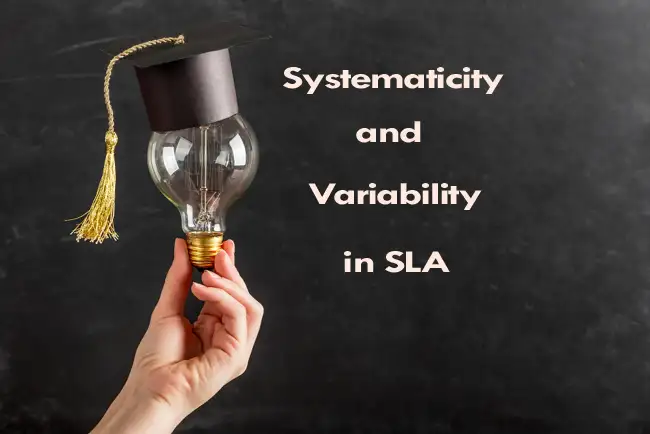
Also it was noticed that when the process of error correction is implemented in the form of negotiation of meaning and focus on form, i.e. focusing on language and function simultaneously, error correction and explicit negative feedback would be more natural and tolerable.
Explicit error correction not only blocks genuine communication, but also it could provide ample opportunities for the learners and teacher to expand their communication in a process of give-and-take. As a result, L2 learners will become more active and responsive.
In addition, when the implementation of error correction is expanded from the teacher to the learners, too, peer assessment, in one of the most actual and pragmatic ways, could be operationalized.
Appendix 1
An Open-ended questionnaire
Weekly assignment as your composition
Your Name: ——————————
Please feel free to express your ideas in response to the following questions.
- How do you feel when you are notified of your errors?
- How does your teacher correct your errors?
- Do you like your errors to be corrected, why?
- Do you think that you can learn more when you are corrected, why or how?
- Do you try not to make the same errors or mistakes in your later compositions?
- Can explicit error correction raise the level of your consciousness in second language learning?
- Do you lose your self-confidence when you are corrected in front of your friends, why?
References
- Benati, A. (2004). The effects of processing instruction and its components on the acquisition of gender agreement in Italian. Language Awareness, 13(2), 67-80. doi:10.1080/09658410408667087
- Best, J. W., & Kahn, J. V. (2006). Research in education. Boston, MA: Pearson Education Inc.
- Cook, V. (2008). Second language learning and second language teaching. London: Hodder Education, Inc.
- Davidson, F., & Fulcher, G. (2007). Language testing and assessment: An advanced resource book. Oxen: Routledge.
- Ellis, R. (2003). Task-based language learning and teaching. Oxford: Oxford University Press.
- Ellis, R. (2008). The study of second language acquisition. Oxford: Oxford University Press.
- Ellis, R. (2009). A typology of written corrective feedback types. ELT Journal, 63(2), 97-107. doi:10.1093/elt/ccn023
- Ferris, D. (1999). The case for grammar correction in L2 writing classes: A response to Truscott (1996). Journal of Second Language Writing, 8(1), 1-11. doi:10.1016/S1060-3743(99)80110-6
- Ferris, D. R., Pezone, S., Tade, C. R., & Tinti, S. (1997). Teacher commentary on student writing: Descriptions and implications. Journal of Second Language Writing, 6(2), 155-182. doi:10.1016/S1060-3743(97)90032-1
- Gass, S. M., & Selinker, L. (2008). Second language acquisition: An introductory course. New York: Routledge, Taylor and Francis Group.
- Hariri Asl, M. H., & Mosallanejad, P. (2010). Essentials of practical writing. Tehran, Iran: Sepahan Publication, Inc.
- Johnson, K. E. (2009). Second language teacher education: A sociocultural perspective. New York: Routledge Taylor & Francis Group.
- Lyster, R. (1998). Negotiation of form, recasts, and explicit correction in relation to error types and learner repair in immersion classrooms. Language Learning, 48(2), 188-218. doi:10.1111/j.1467-1770.2001.tb00019.x
- Mackey, A. (2006). Feedback, noticing and instructed second language learning. Applied Linguistics, 27(3), 405–430. doi:10.1093/applin/ami051
- Merriam, S. B. (1998). Qualitative research and case study applications in education. San Francisco, California, SC: Jossey-Bass Inc.
- Murphy, R. (2007). Essential grammar in use. Cambridge: Cambridge University Press.
- Mutch, A. (2003). Exploring the practice of feedback to students. Active Learning in Higher Education, 4(1), 24-38. doi:10.1177/1469787403004001003
How to cite this article in APA Style?
Hariri Asl, M. H. (2023). Explicit corrective feedback in writing for ESL students. LELB Society, https://lelb.net/explicit-corrective-feedback-in-writing/
